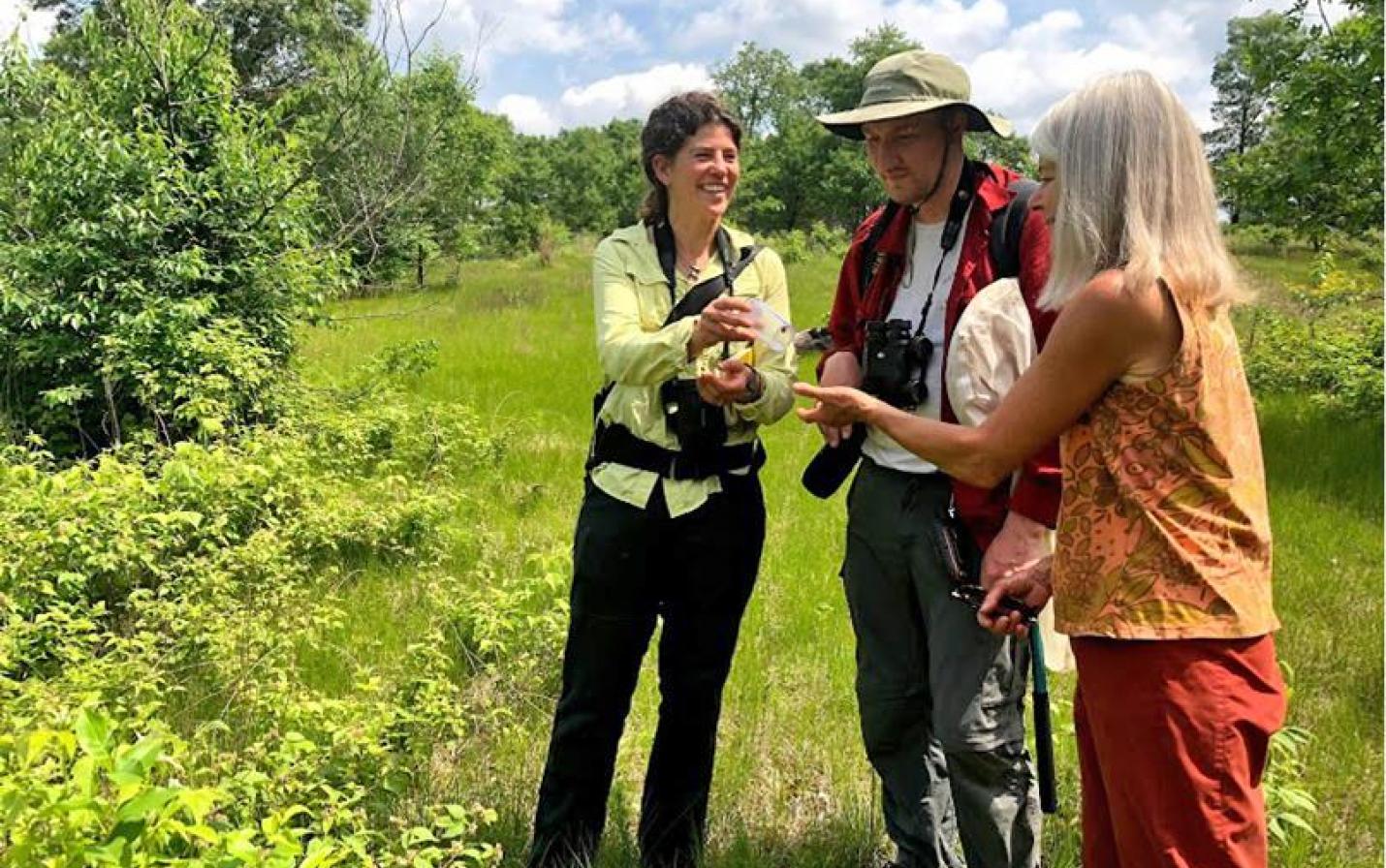
Contact(s): Dawn Hinebaugh, DNR Landowner Incentive Program coordinator, 608-266-5243; Darcy Kind, private lands biologist, 608-267-9789
Technical and financial help for projects for pollinators, other rare species
MADISON - Private landowners, conservation organizations, and land trusts can now apply for funding and technical help through the Landowner Incentive Program to create and enhance habitat for pollinators and other at-risk species in Wisconsin's Driftless Area.
"Many of our native bees, butterflies and moths are in decline and they are important for Wisconsin's native wildflowers, ecosystems, agricultural crops, and natural areas which depend upon them," says Drew Feldkirchner, who leads the Wisconsin Department of Natural Resources Natural Heritage Conservation Program that runs the Landowner Incentive Program.
Since 2006, LIP grants to private landowners have helped improve more than 11,000 acres of habitat in Wisconsin for more than 240 at-risk species, including red-headed woodpeckers, monarch butterflies, rusty patched bumble bees, and gophersnakes.Photo credit: DNR
"Landowners are key to conserving our pollinators and we're very pleased we can provide funding to increase high-quality habitat in the Driftless Area."
Wisconsin Landowner Incentive Program staff teamed up with Minnesota DNR to secure the competitive $500,000 grant from the U.S. Fish and Wildlife Service's State Wildlife Grant Competitive Program. The grant brings to more than $4.6 million the amount LIP staff have secured in the last 15 years for such restoration work for at-risk species.
Landowners should visit the Landowner Incentive Program website to review details of the application process, project ranking criteria, and eligible work. Search the DNR website, dnr.wi.gov, for "LIP."
Who is eligible and how to apply
Any privately-owned land with prairie, savanna and/or oak woodland habitat within the Driftless Area is eligible, including traditional private parcels and land trust holdings, according to Dawn Hinebaugh, the DNR conservation biologist who coordinates the Landowner Incentive Program.
Projects must clearly provide benefits to pollinators and other at-risk species and their habitat. Eligible work includes, but is not limited to, prescribed burns, planting native vegetation, and invasive and woody species removal, Hinebaugh says.
For landowners who are new to the program, applying for LIP funding is a two-step process that includes a pre-proposal and, if accepted, a full proposal.
"The pre-proposal allows us to review your project before you invest time in drafting a full project proposal," Hinebaugh says. "If your pre-proposal is approved, you'll be invited to submit a full proposal, which includes more detailed information such as a budget, project objectives, and work schedule."
A site visit by a biologist may also be required to assess the project proposal. Applicants who have received funding in the past can contact program staff directly to receive a project application.
Funding is provided to highly ranked projects on a first-come, first-served basis, and projects generally last one year. Applicants may request up to $25,000; however, most awards are around $4,000 to $8,000. DNR reimburses a landowner up to 75% of the cost for on-the-ground practices. Landowners are required to contribute the remaining 25% share through out-of-pocket costs (cash match), or as an in-kind labor and equipment match. The grant also will also fund DNR efforts work to inventory and monitor priority species within the Driftless Area.